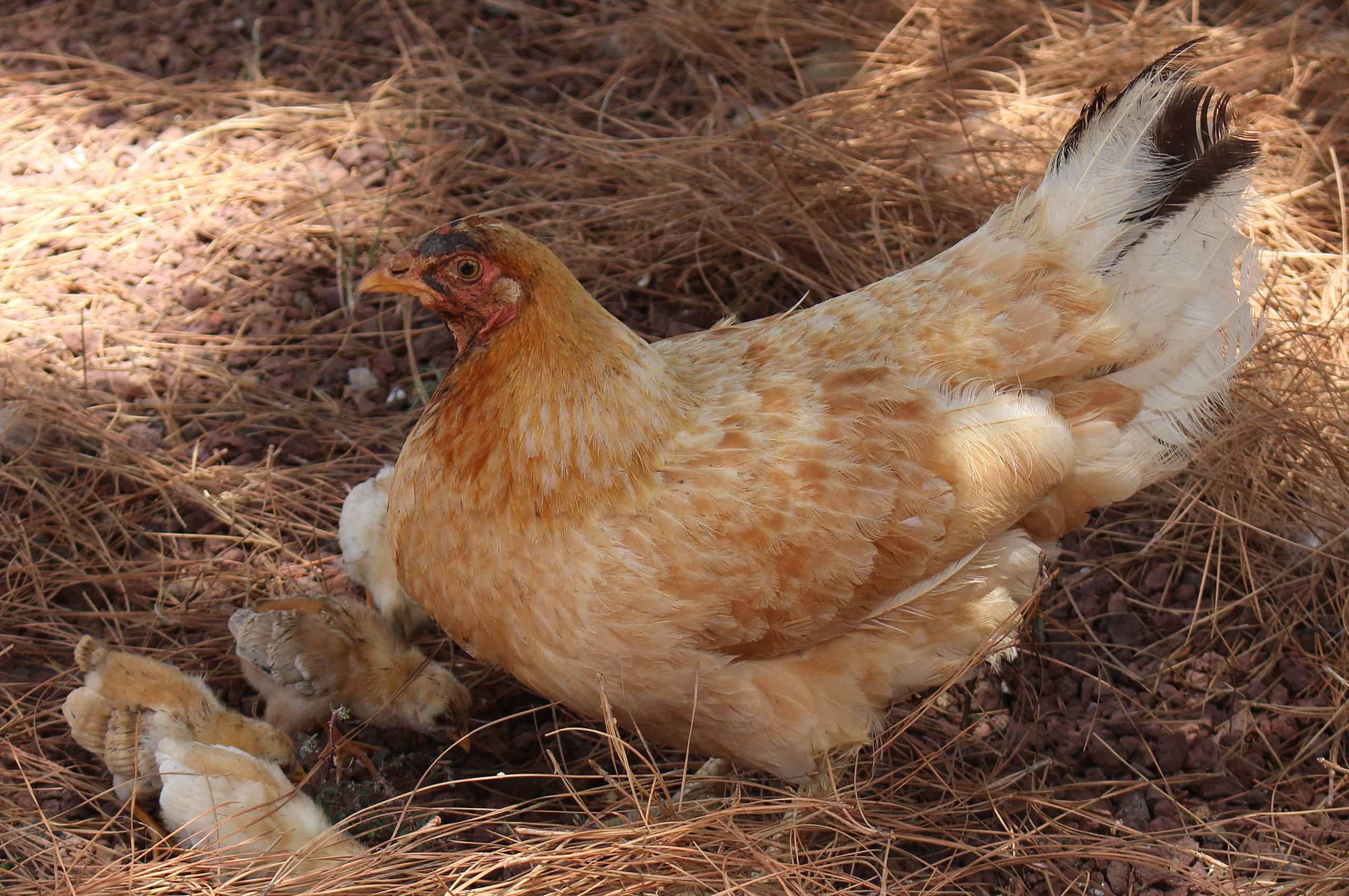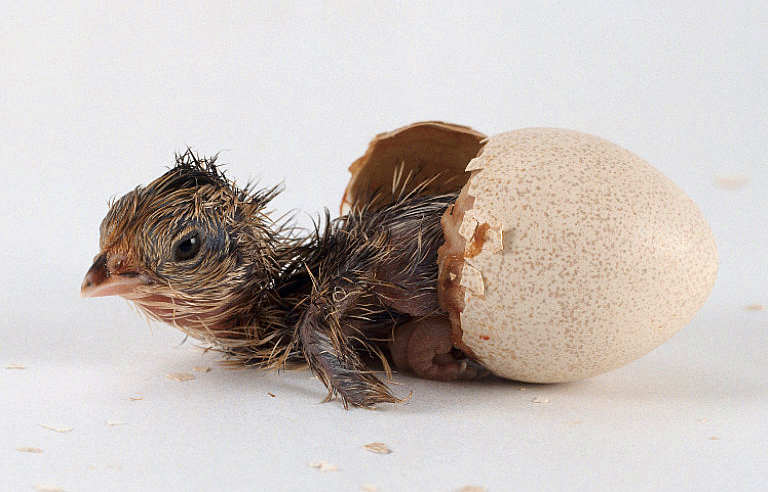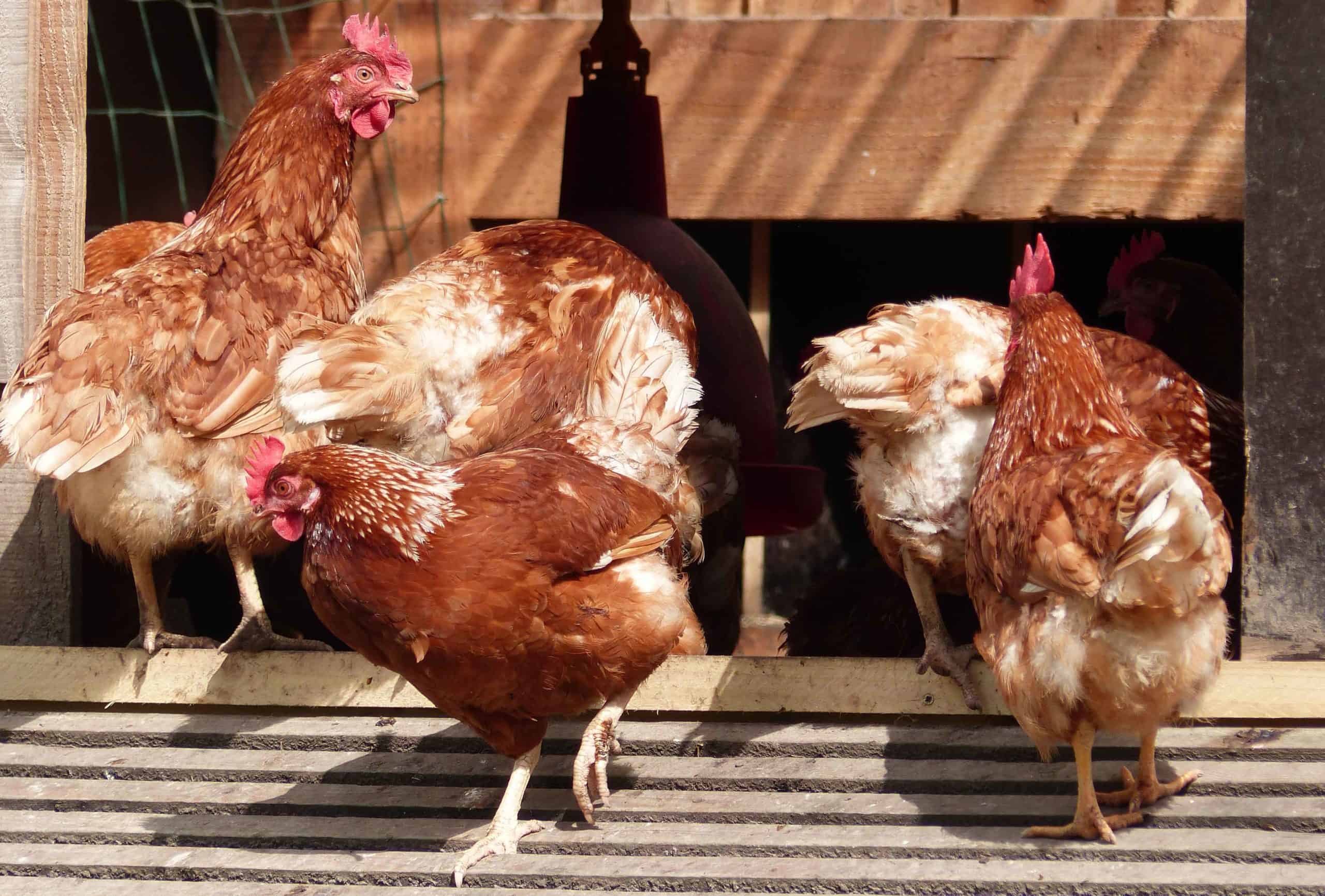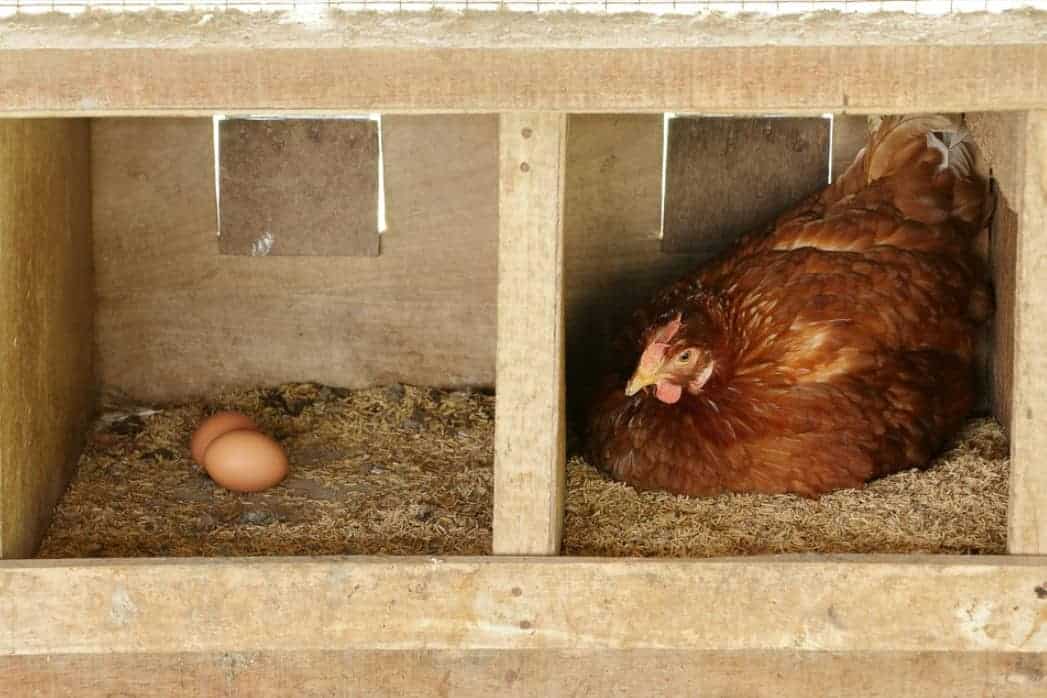The United Nations estimates there may be as many as 23 billion chickens on this planet right now.
With around 7.8 billion of us, that means there are nearly three chickens for every person!
Yet, factually speaking, we don’t really know all that much about the chicken life cycle. Yes, we know (or can infer) that chickens reproduce quickly – the numbers speak for themselves there!
We know that humans eat a lot of chickens and a lot of chicken eggs. And we know that there are different breeds of chickens that can look quite different on the outside even though they are basically the same on the inside.
But what is the chicken life cycle? Does it have different parts? How long does it take a fertile chicken egg to hatch? How many years does an adult chicken live? Let’s explore these and other interesting questions about the chicken life cycle!
Chicken Life Cycle: An Overview

There are four fundamental phases to the chicken life cycle.
Phase 1: Embryo
The embryo phase begins the moment the egg is laid. It lasts another 21 days for this phase of life.
Phase 2: Chick
The chick phase begins on day 21 when the chick sheds its egg. How long the chick phase lasts depends on the specific breed of chicken.
Phase 3: Pullet (Adolescent)
The pullet stage is often forgotten when you think about chicken development. As it turns out, chickens are just like people in this way – they have to become teenagers before they become adults.
Phase 4: Adult
The adult chicken’s phase of life can last up to seven years. The lifespan of an adult chicken depends on the breed and also on the conditions of their care and environment, also known as husbandry.
So now let’s look more closely at what happens during each of these four basic chicken life cycle stages.
Chicken Life Cycle As An Embryo

Female chickens can lay two kinds of eggs: infertile and fertile. Only the fertile eggs will hatch and become baby chicks.
When a female chicken lays a clutch of fertile eggs, it takes approximately 21 days before the little chicks will start to emerge.
The moment the egg gets deposited into the nest, the action begins.
Day 1: Tissue begins to form and develop.
Day 2: The heart gets made and starts beating.
Day 3: The circulatory system begins forming, and the chick’s tail bud appears.
Day 4: The little chick’s limbs begin to grow, including wing buds and leg buds. The brain and eyes also begin to form.
Day 5: The chick gets knee buds and elbow buds.
Day 6: Individual digits form for the chick’s toes and claws. The beak also starts to form.
Day 7: The beak continues to form, and the egg tooth appears (what the chick uses to break out of the egg). The comb also starts developing.
Day 8: The little chick starts to grow feathers.
Day 9: The mouth opens up.
Day 10: The chick’s claws start to form.
Day 11: Tail feathers begin to grow.
Day 12: The feet and legs start to form scales.
Day 13: The chick gets eyelids.
Day 14: The chick’s body turns so the head occupies the larger end of the egg.
Day 15: The chick’s gut is drawn in towards the abdominal area.
Day 16: Feathers cover the chick’s whole body.
Day 17: The chick’s head draws down between the legs.
Day 18: The chick’s body completely fills the interior space of the egg.
Day 19: Nearly the whole yolk sac is absorbed.
Day 20: The chick uses the egg tooth to start pipping (breaking through the eggshell) from the inside.
Day 21: The chick continues pipping and breaks out of the egg to hatch.
Isn’t it amazing that so much can happen in just 21 days?
This video explains in a visual form exactly what happens on each day of the chicken life cycle inside the egg so you can see exactly how the chick looks each day of its development.
Chicken Life Cycle As A Chick
The chick stage of the chicken life cycle is the cutest, without a doubt. And also the noisiest. Chicks are adorable round puffs of feathery fluff. They make peeping sounds and follow their mother around like little fluffy robots.
Chicks imprint on their mothers. In the absence of a mother hen (such as when chicks are incubator-hatched), they will imprint on the first moving object they see. Sometimes that can be you!
Tiny newborn chicks are completely dependent on their mom for help navigating their new world. They need to be shown how to eat and drink.
Young chicks are very fragile and wobbly. Their legs will take a week or so to get stronger as their muscles continue to develop.
Tiny chicks grow remarkably fast. They can double their sizes within the first month of life alone.
At the sixth to eighth week, depending on the breed you are raising (around 60 days for most), the young chicks have entered the adolescent stage of life – they are now pullets.
Chicken Life Cycle As A Pullet

Pullet is the term used to describe a chicken that is no longer a chick yet not quite an adult.
The pullet stage is the most awkward stage in the chicken life cycle. Pullets can seem to be all wings and legs, with patchy feathers and ungainly bodies.
It is important to watch pullets closely around adult chickens. Pullets are not yet as big and strong as adults and can get bullied in a flock setting.
Like the chick phase of life, the pullet stage varies based on the breed of chicken. For most breeds, the pullet stage will last until your juvenile chickens are about 20 weeks (or five months) young.
Here’s a helpful video that will walk you through the basic phases of a chicken’s life cycle stages from embryo through the start of adult life (six months). You can visually see how the chickens change and grow and look so different in each phase of life.
Chicken Life Cycle As An Adult
Female chickens (hens) may start laying their first eggs during the pullet phase of the chicken life cycle. Such eggs are abnormally small.
But not to worry – these are just “practice” eggs, and your adult hens will lay normal, full-size eggs once they become adults.
The adult stage of the chicken life cycle is also when male chickens become roosters. Roosters can be incredibly loud and very territorial around “their” hens. Roosters typically start crowing around the age of 18 weeks (4.5 months).
If you are a reader who’s interested in keeping chickens for eggs or meat (or both) in an urban setting, check with your local regulations before you get started. Many communities prohibit roosters because of the noise level.
Healthy adult hens will typically lay one egg per day, although skipping a day here or there is completely normal.
Adult hens will lay almost daily for at least the first one to two years of their lives. It is normal for hens to lay for about ten months and then take a break. During this break, they will molt out their feathers and grow in fresh feathers.
After the first year or first few years of adult life, egg laying may become less regular. Sometimes chickens will also stop laying when they are ill or when they are not getting enough light.
As The Farmers Almanac explains, adult chickens can live for seven years or longer under optimal husbandry conditions.
There’s lots to learn when you first start keeping chickens. Start by getting grounded in the chicken life cycle, as you have done by reading this piece.
Life Cycle of a Chicken: FAQs

Bravo! Now let’s look at the internet’s most asked question regarding the chicken lifecycle.
What are the Four Stages in Growing Chickens, and the Duration Per Stage?
Yes, a chicken lives through four stages in its life, and they include:
The Embryo Stage (21 Days)
This phase of the chicken takes place in the egg. It takes 21 days when the embryo develops from a shapeless form to a chick that’s ready to break out.
The Chick Stage (6-8 Weeks)
This, without a doubt, is the cutest phase of a chicken’s life. But don’t let those fluffy balls of fur fool you; they are noisy as hell. Chicks imprint themselves on their mother, and they follow her every move. This is how our “Chicken Littles” learn how to eat and survive.
The Pullet Stage (20 Weeks)
This is that weird phase between chicks and adults. The human equivalent would be teenage. I call it weird, not to be derogative, but because the chicken isn’t fully grown; it has patches of naked skin and a skinny frame.
The Adult Stage (up to 7 Years)
Now this is what comes to your mind when you picture a fully-grown chicken. In this phase, the body is fully grown. The hens lay normal-sized eggs, and the roosters break our sleep with their morning cries.
How Many Days Chicken Will Lay Eggs After Mating?

It takes 7-10 after mating before a hen starts to drop some fertilized eggs. Why does it take so long? You see, hens don’t instantly get fertile after mating. It takes time for the sperm to find its way to the hen’s oviduct. I guess good things take time.
What is the Full Life of a Chicken?
A chicken can live for 3-7 years. But, of course, this depends on the breed and how you take care of your flock. With ideal care, keep them from dogs and suppress your appetite for drumsticks, and your chicken could blow 10-12 candles.
Summary
Understanding the chicken life cycle will help you plan for your chickens’ needs at each phase of their life. You will know when to expect eggs or chickens that are suitable for providing meat. Raising backyard chickens as a family is also a great project to do with kids.
Your kids can learn about life by watching hatching eggs and growing chicks. And your family can enjoy organic chicken eggs and meat that is safe and delicious.

Joseph Hudson has been raising chickens for over 15 years. In 2018, he completed the Agriculture & Natural Resources program at Mt. San Antonio College. He currently raises over 1400 chickens on his 7.5-hectare farm. He keeps sharing his experience on raising healthy and happy chickens on Chicken Scratch The Foundry.








